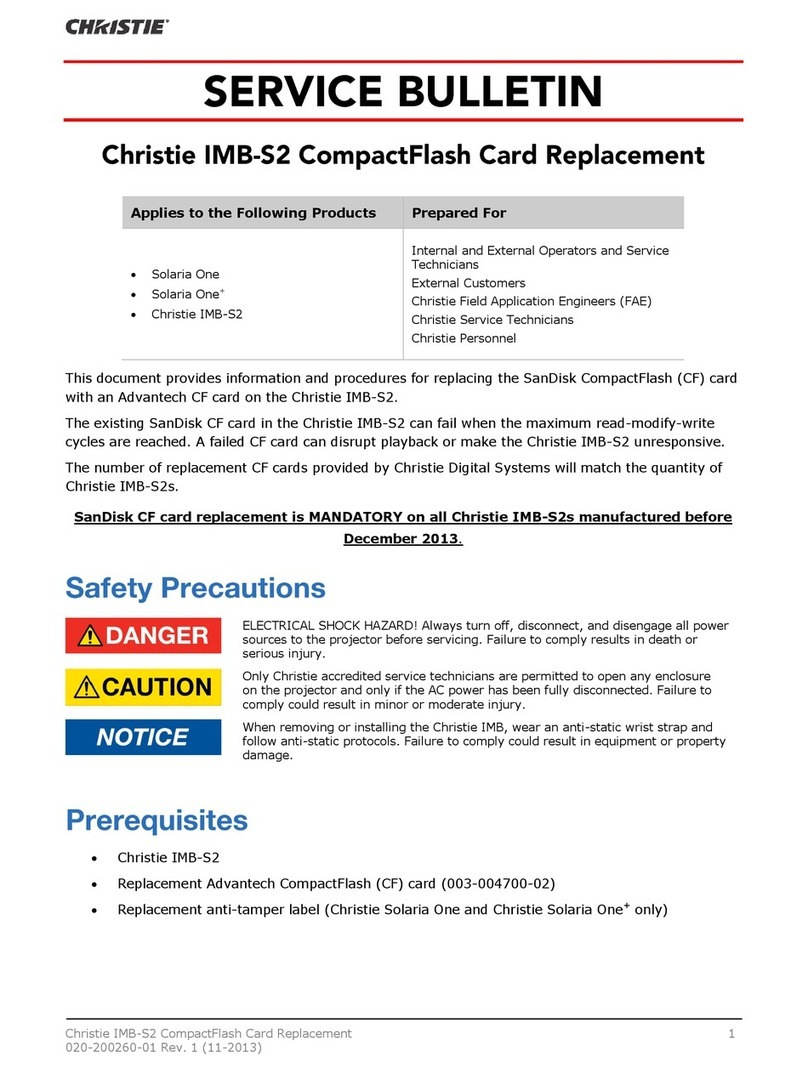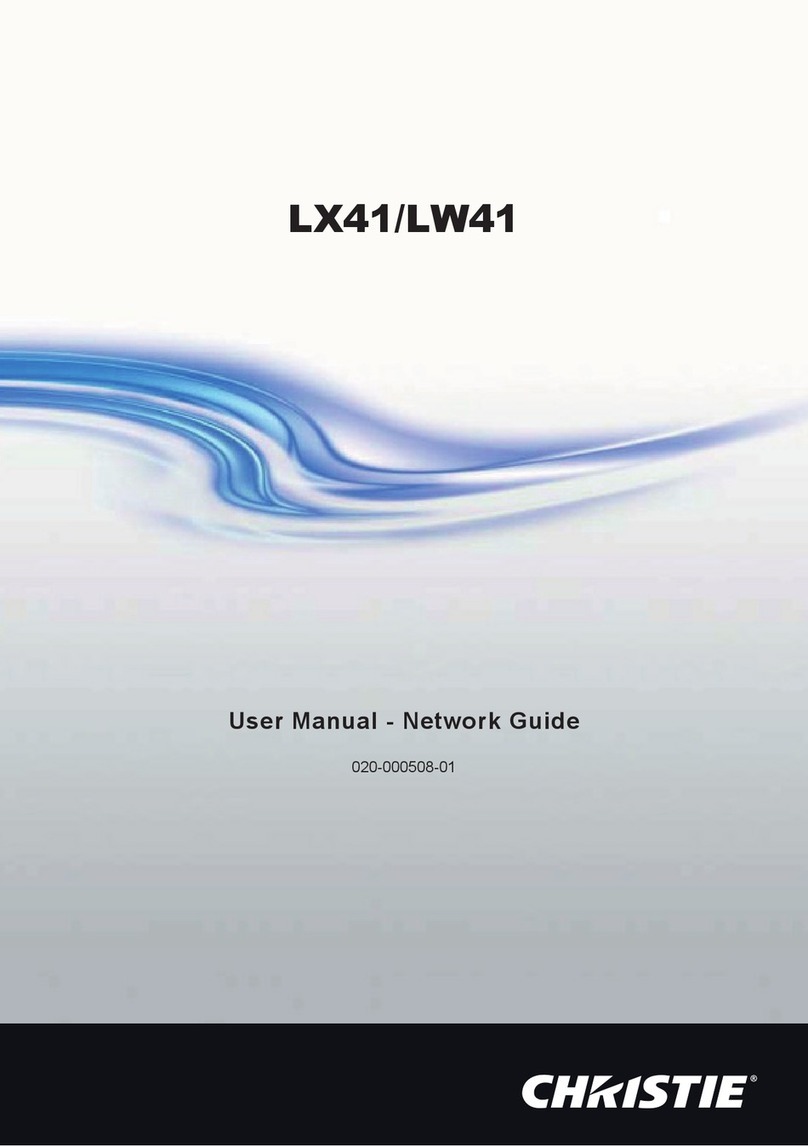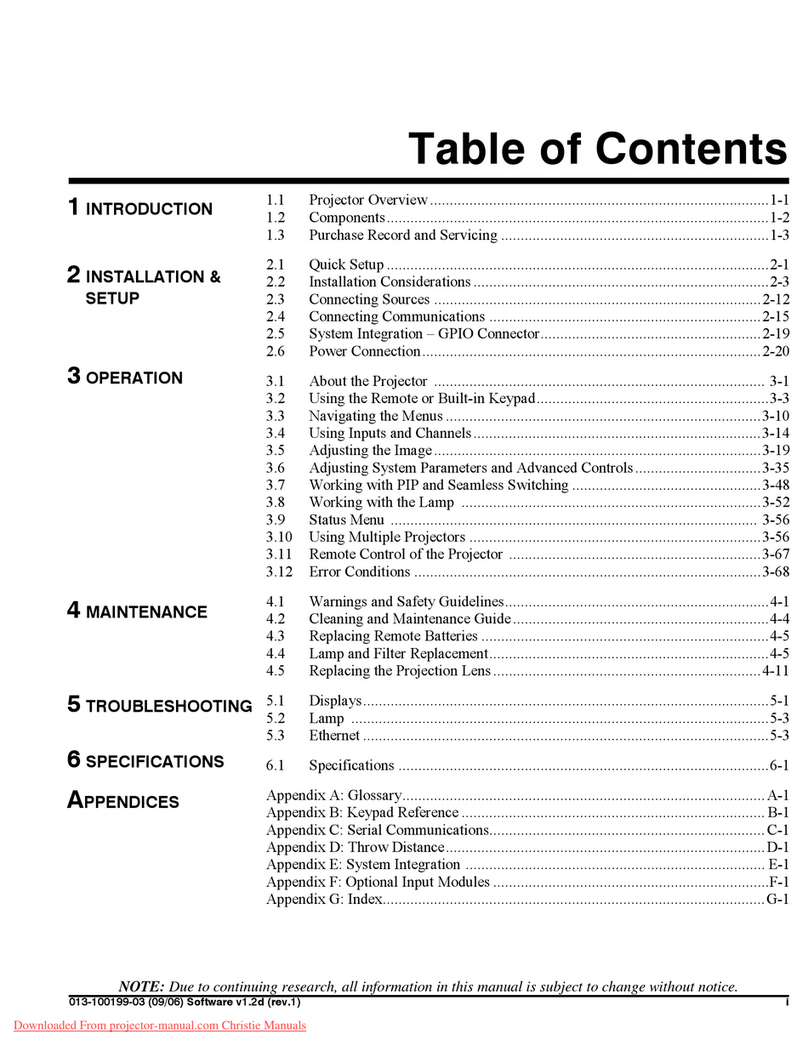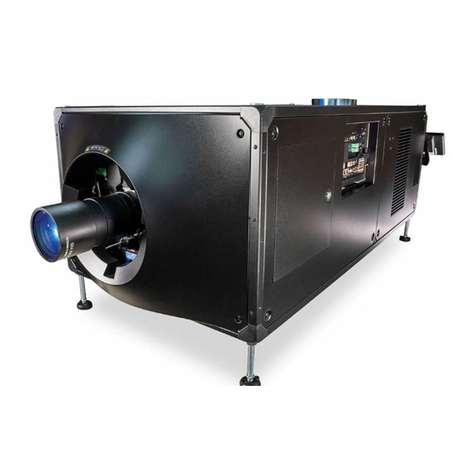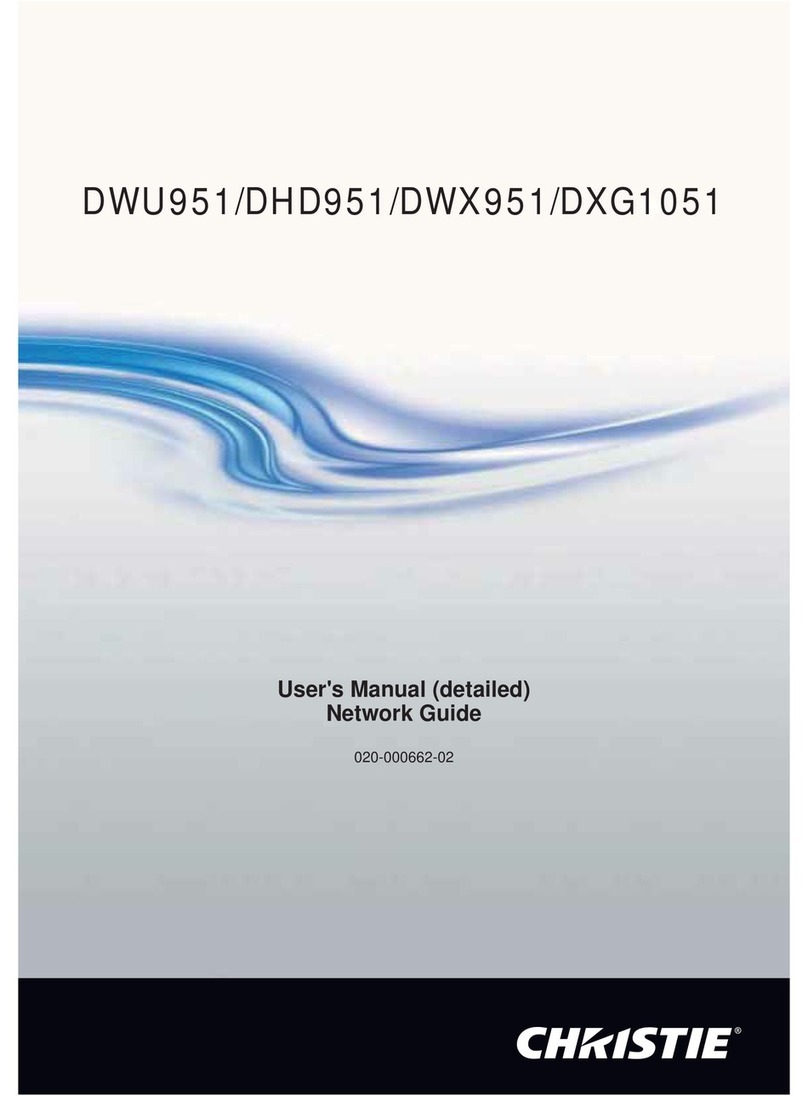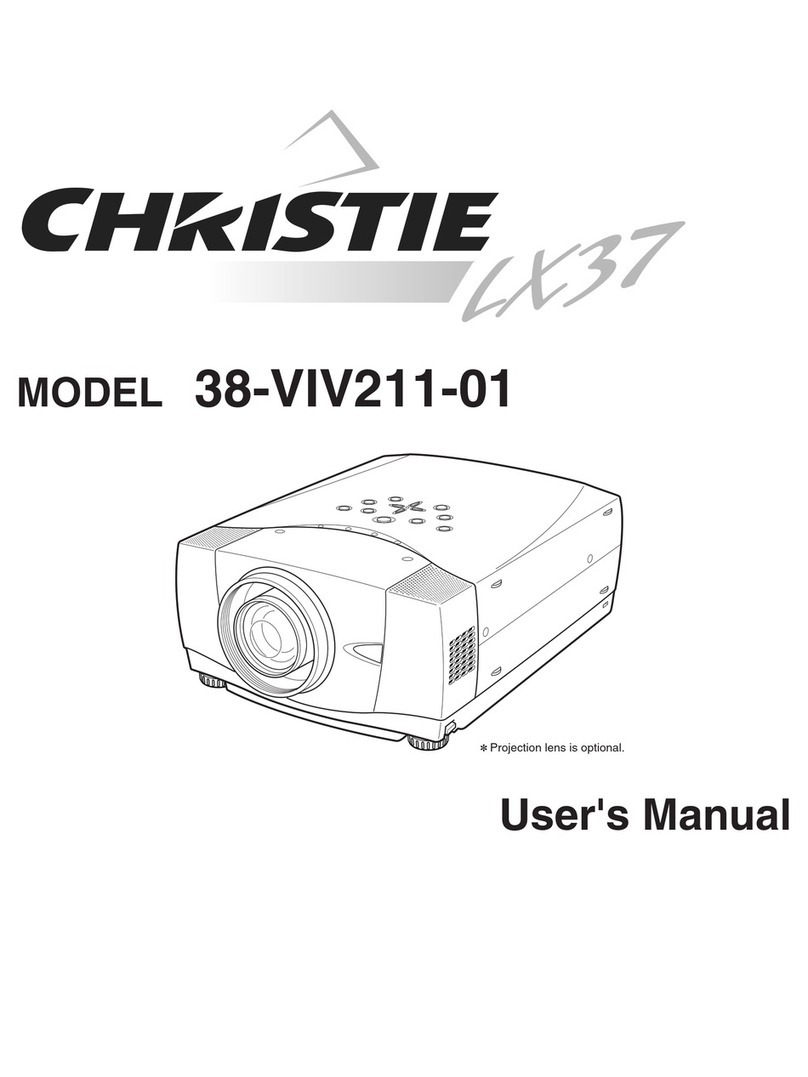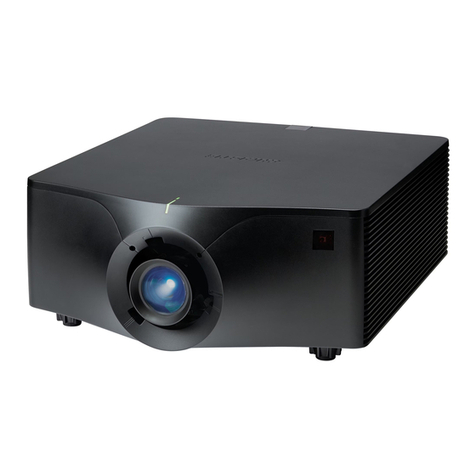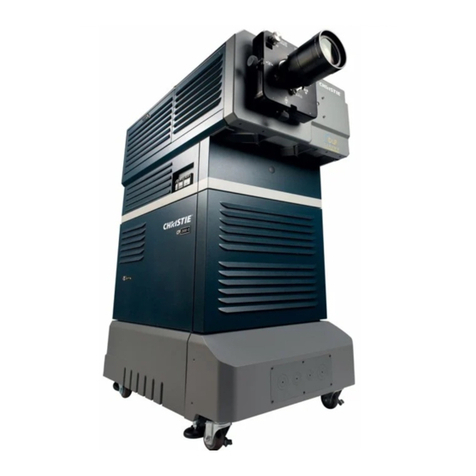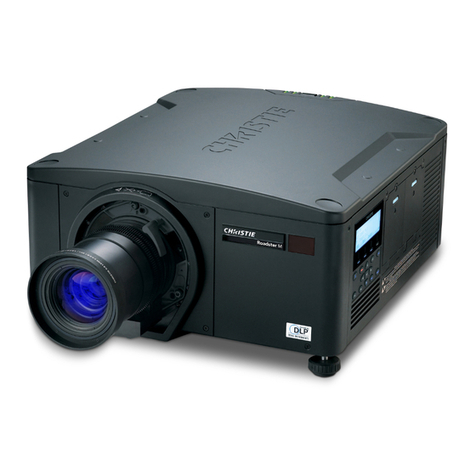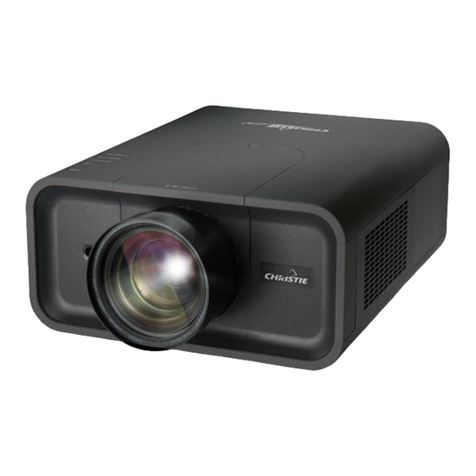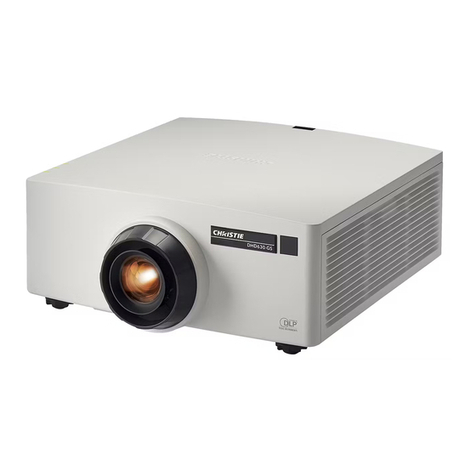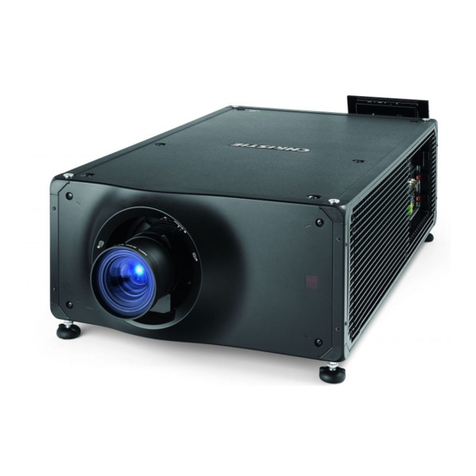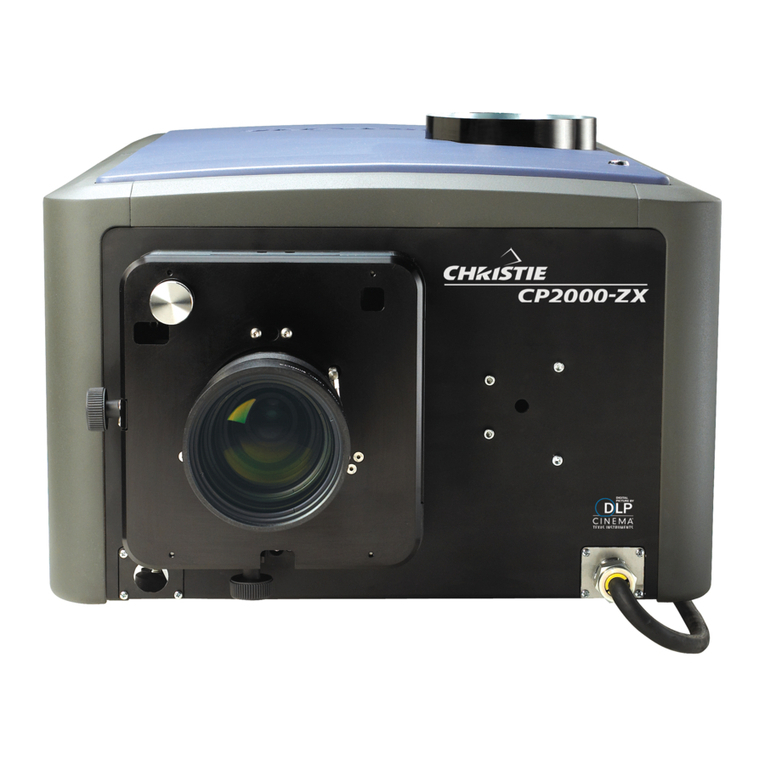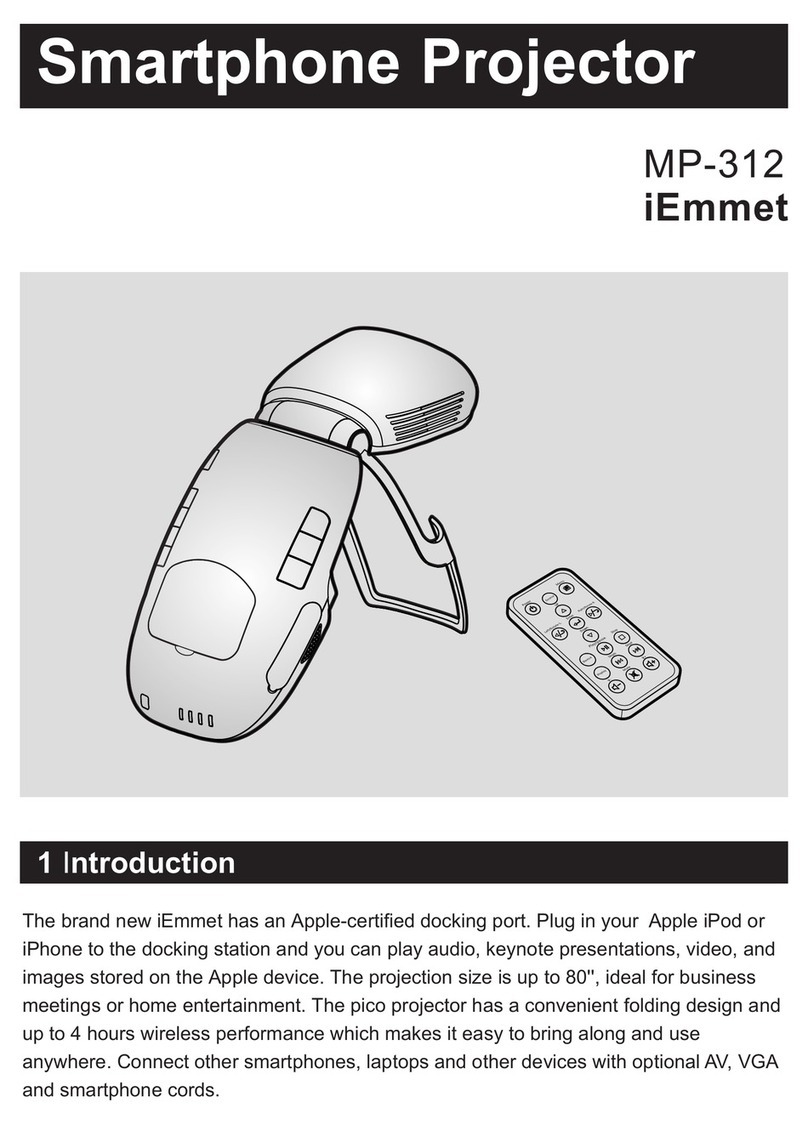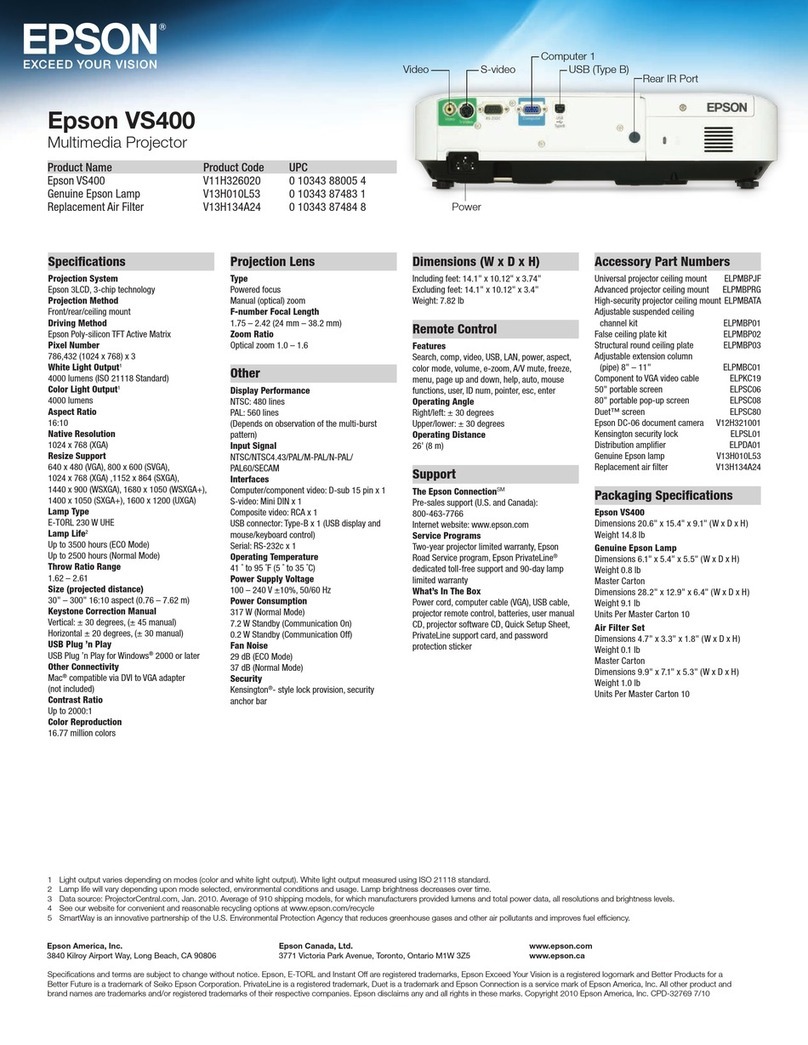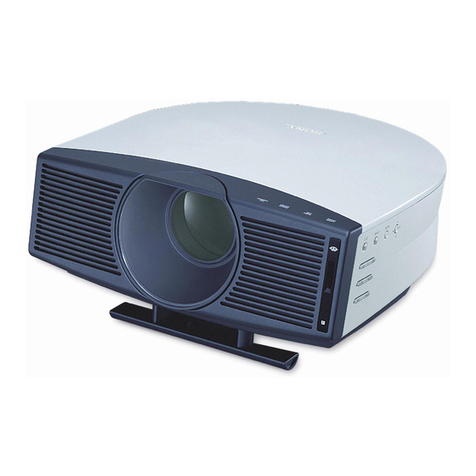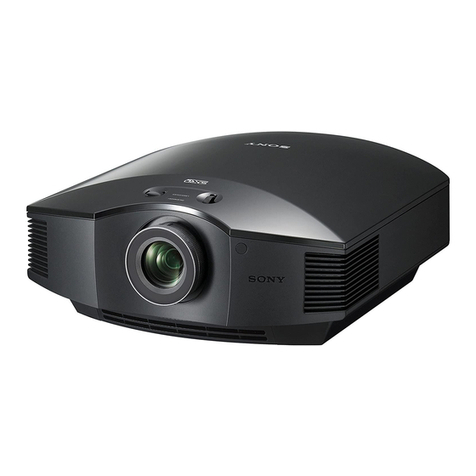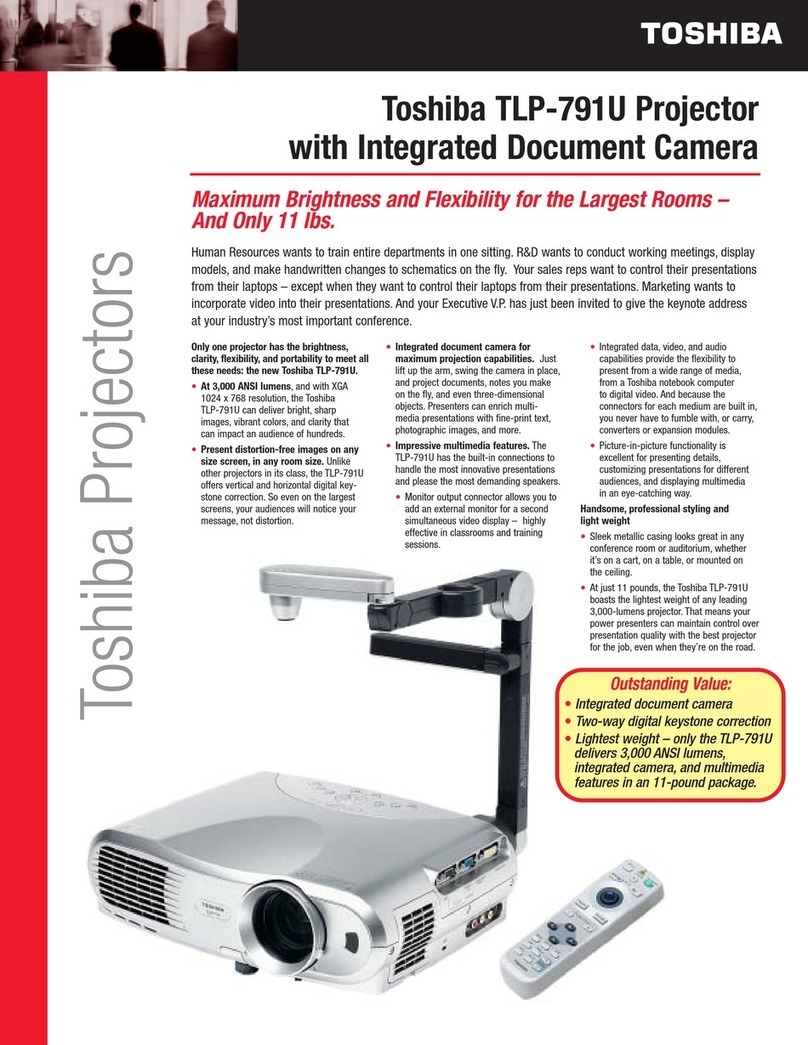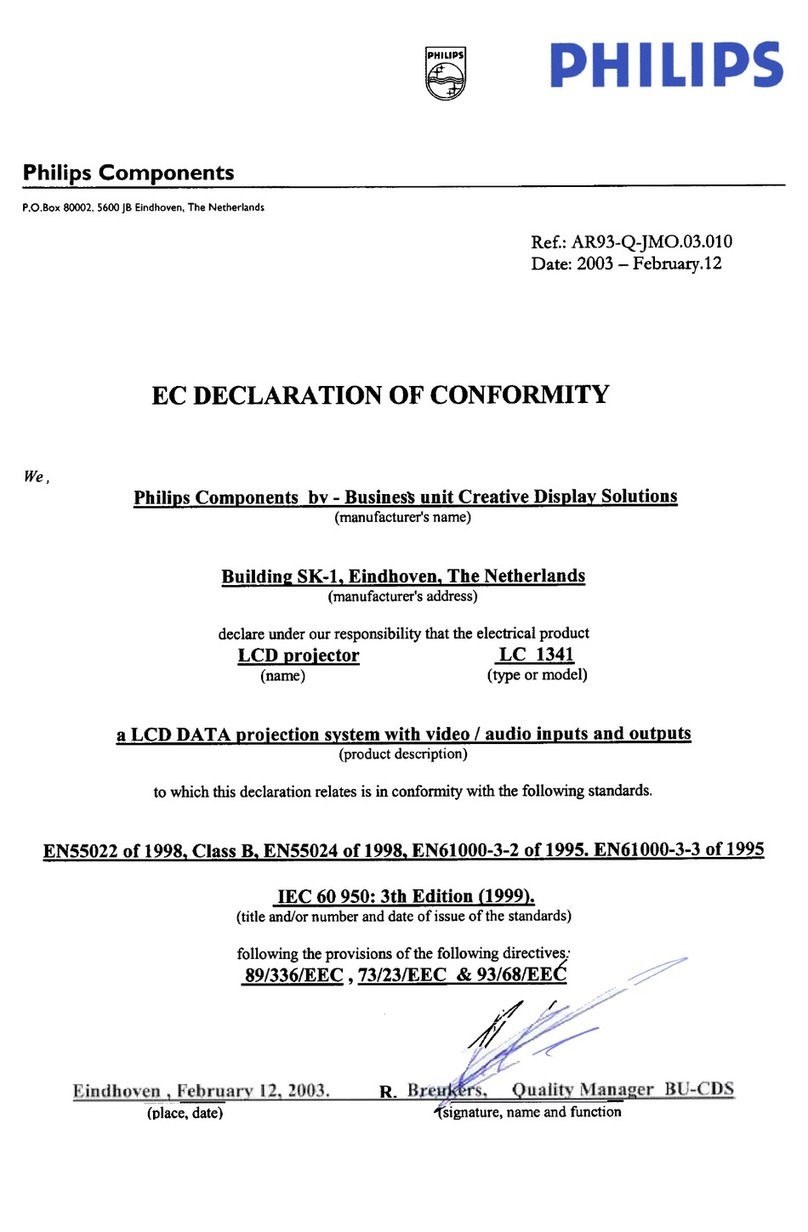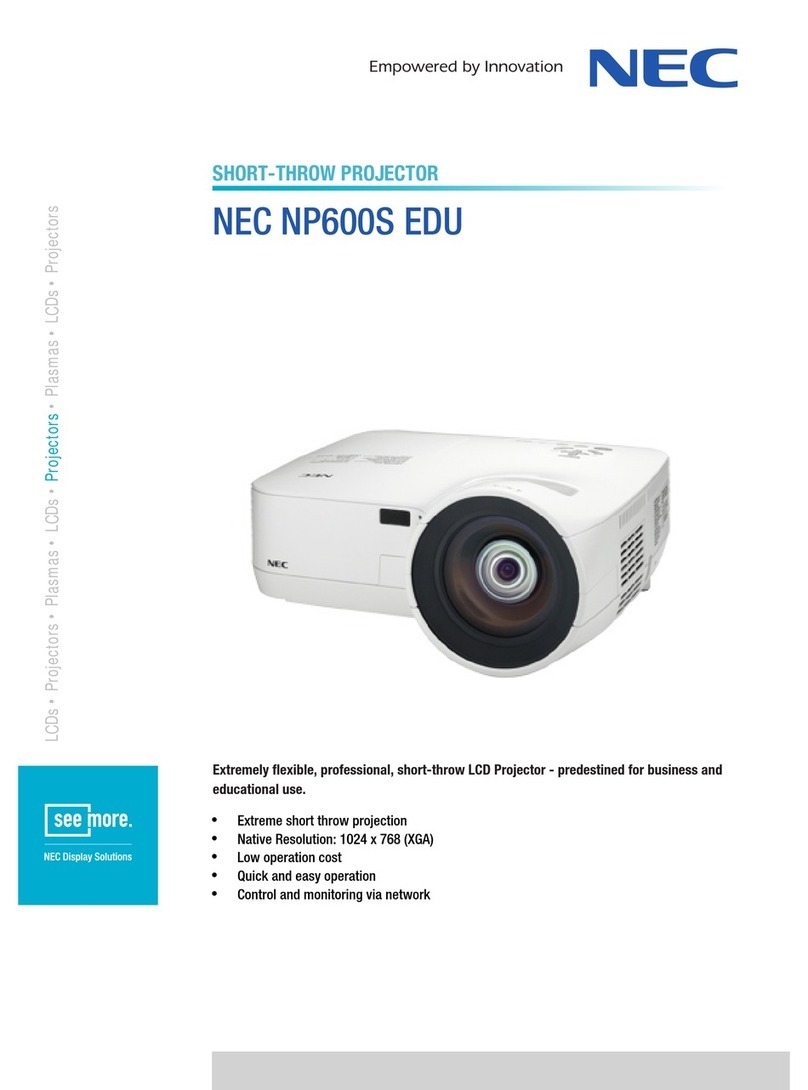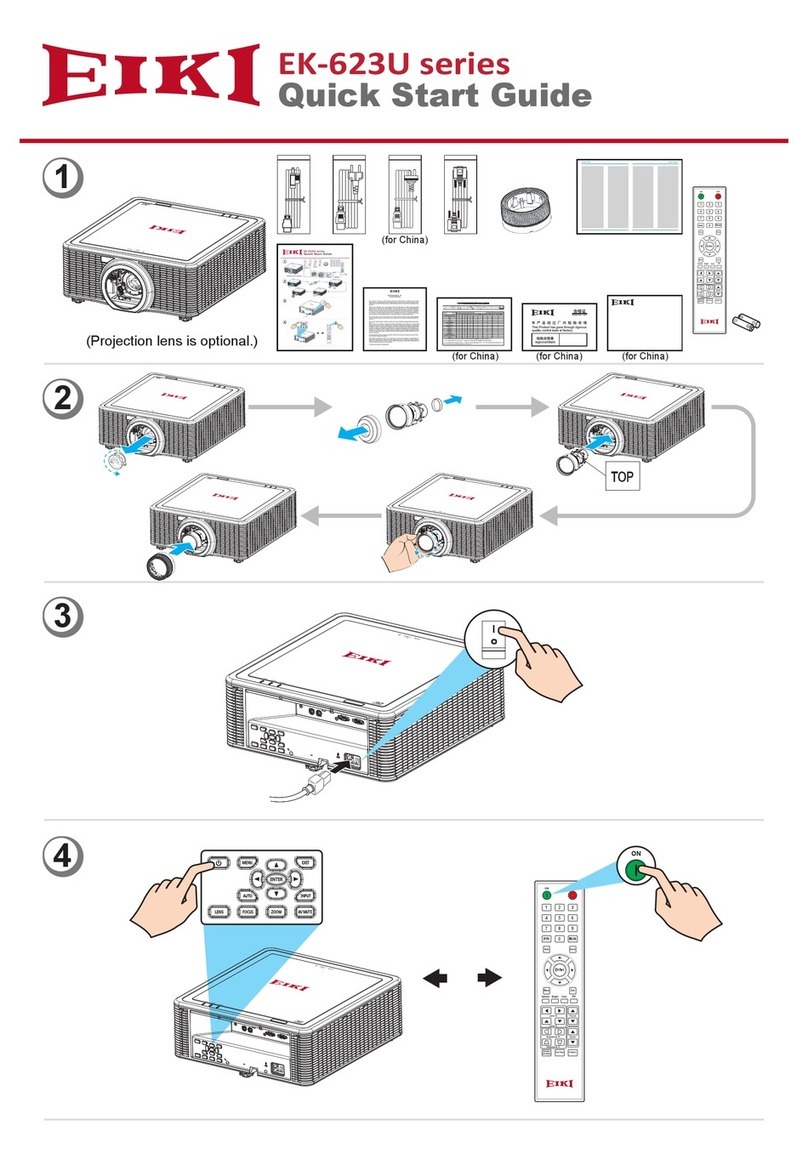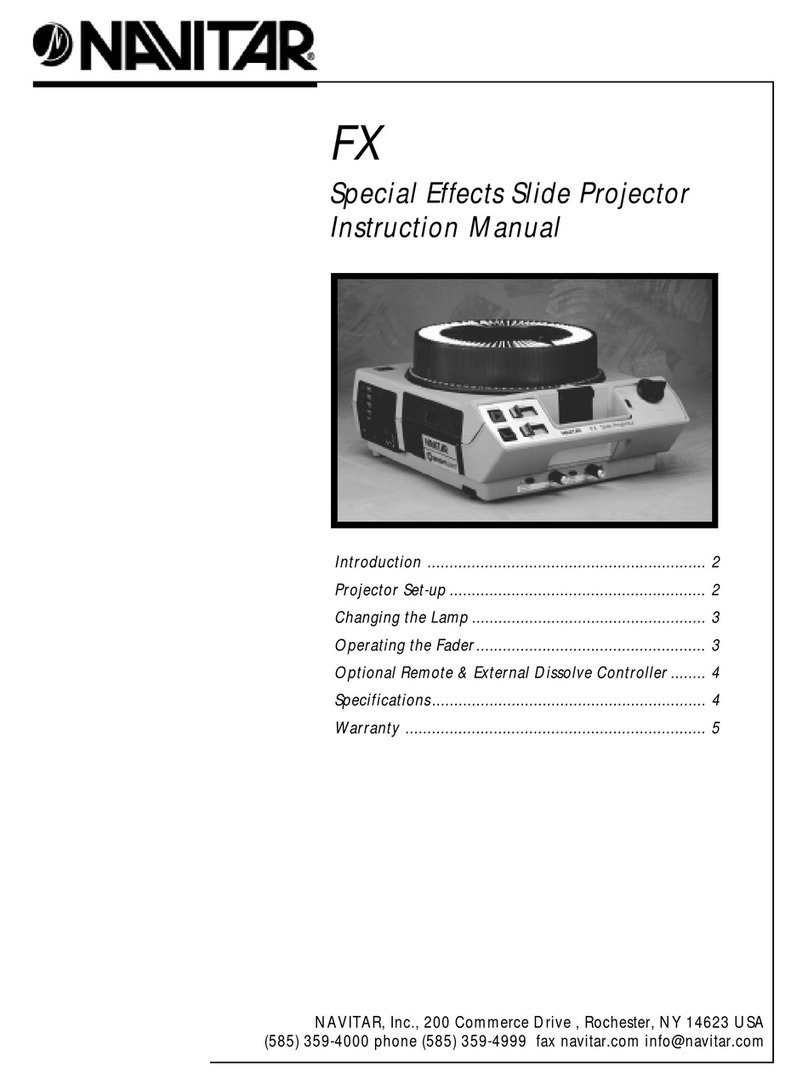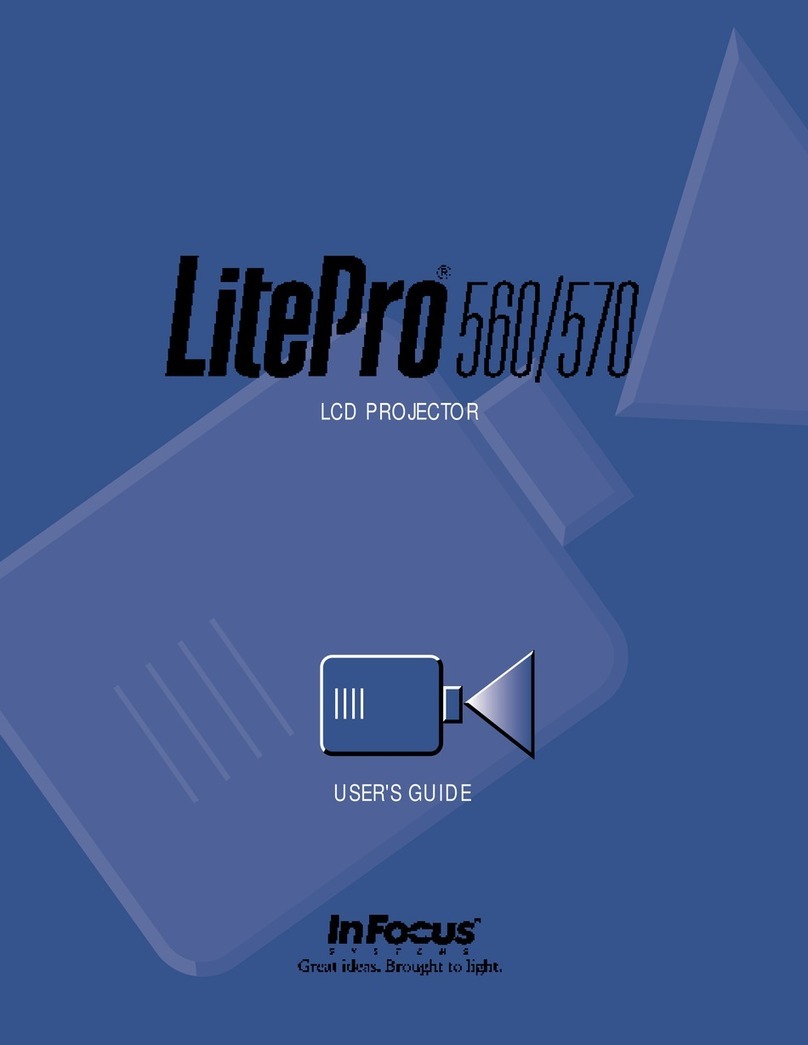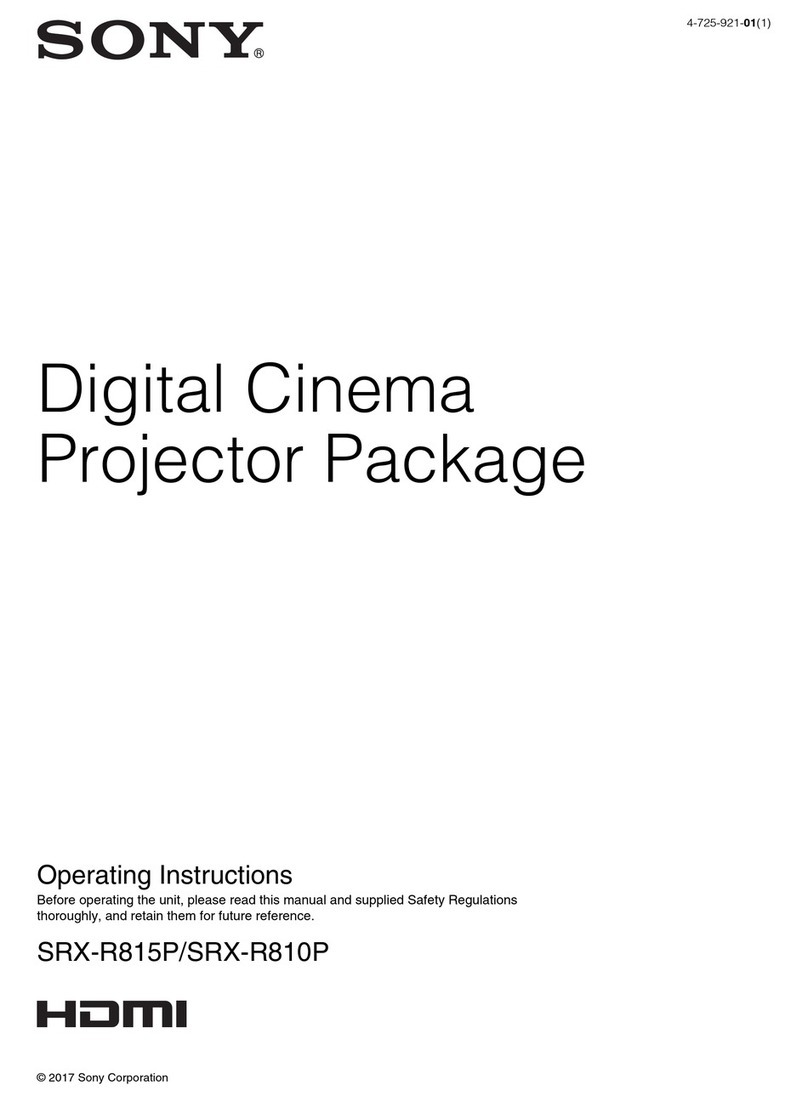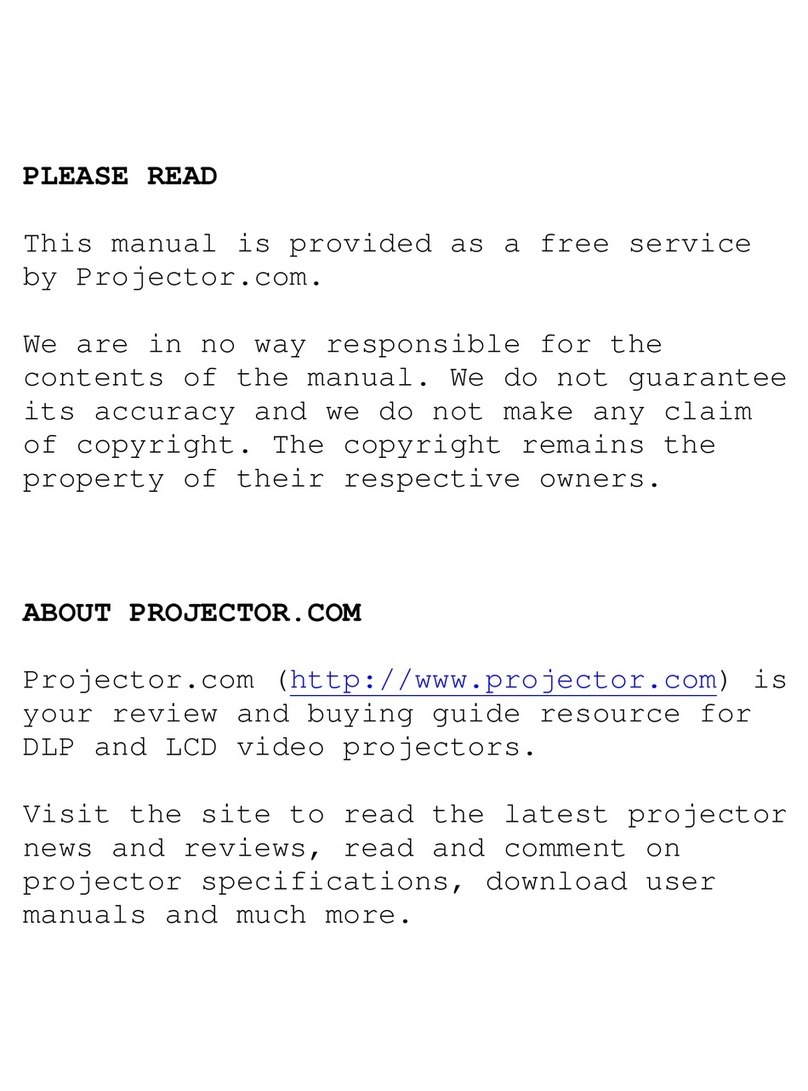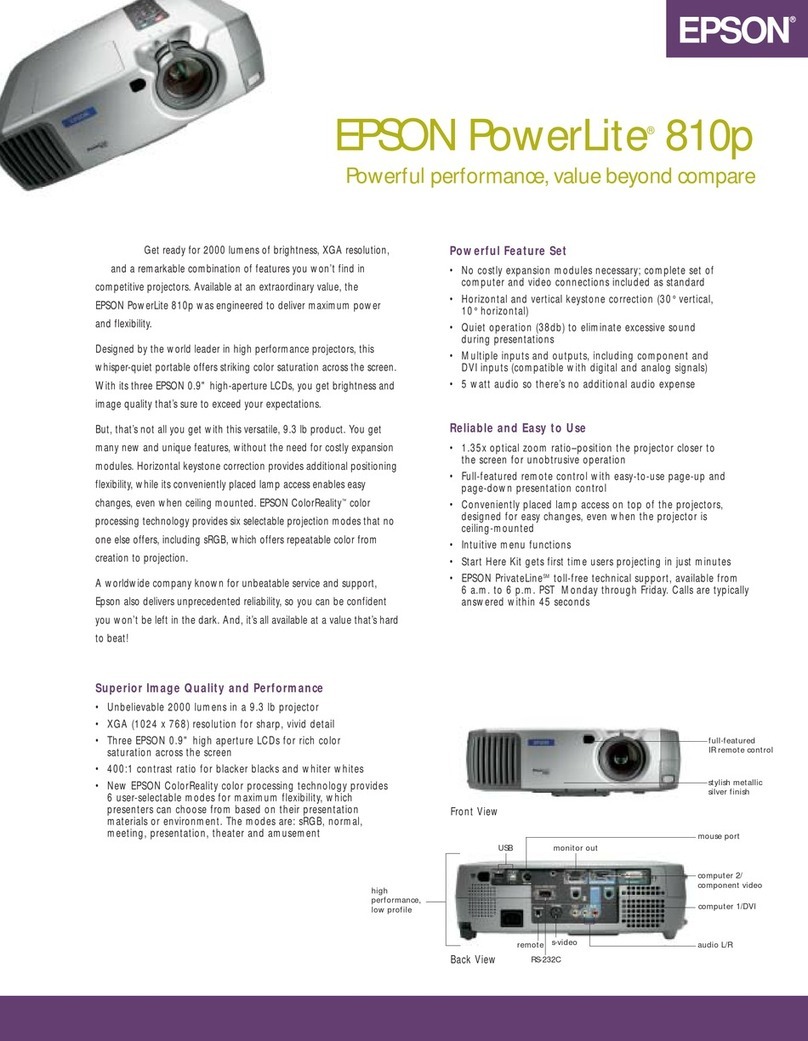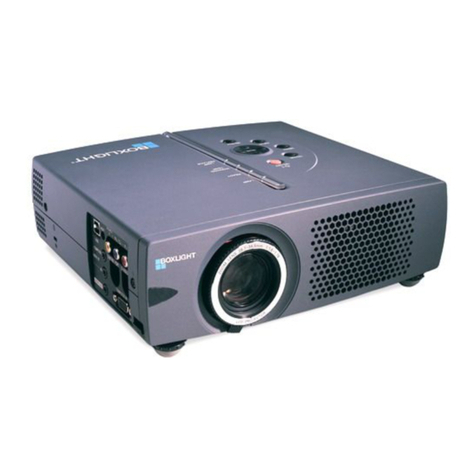
Roadster / Mirage S+ User's Manual
Table of Contents
013-100189 (08/05) Software v1.1 Roadster / Mirage S+ User’s Manual i
REV.1
Section Contents Page
1.1 The Projectors...................................................................................................1-1
1.2 List of Components...........................................................................................1-2
1.3 Purchase Record and Warranty Registration ....................................................1-3
2.1 Quick Setup ......................................................................................................2-1
2.2 Installation Considerations................................................................................2-3
2.3 Projector Position and Mounting....................................................................2-14
2.4 Source Connections ........................................................................................2-17
2.5 Connecting Communications..........................................................................2-20
2.6 Connecting Multiple Projectors......................................................................2-23
2.7 Power Connection...........................................................................................2-26
2.8 Operating Orientation.....................................................................................2-27
2.9 Leveling..........................................................................................................2-27
2.10 Zoom, Focus, and Lens Offset........................................................................2-27
2.11 Keypad Conversion.........................................................................................2-28
3.1 Overview...........................................................................................................3-1
3.2 Projector Basics................................................................................................3-1
Components/Features ..............................................................................3-1
3.3 Using the Keypads............................................................................................3-4
3.4 Navigating the Menus.....................................................................................3-11
3.5 Using Inputs and Channels .............................................................................3-14
3.6 Adjusting the Image........................................................................................3-20
3.7 Adjusting System Parameters and Advanced Controls...................................3-35
3.8 Working with PIP or Seamless Switching ......................................................3-46
3.9 Working with the Lamp..................................................................................3-49
3.10 Status Menu ....................................................................................................3-52
3.11 Using Multiple Projectors...............................................................................3-53
3.12 Remote Control of the Projector.....................................................................3-64
3.13 Error Conditions.............................................................................................3-64
4.1 Warnings and Guidelines..................................................................................4-1
4.2 Cleaning............................................................................................................4-3
4.3 Replacing Keypad Batteries..............................................................................4-4
4.4 Replacing the Lamp and Filter..........................................................................4-4
4.5 Replacing the Lens............................................................................................4-8
5.1 Displays............................................................................................................5-1
5.2 Lamp.................................................................................................................5-3
5.3 Ethernet.............................................................................................................5-4
6.1 Specifications....................................................................................................6-1
continued…
1Introduction
2
Installation &
Setup
3
Basic
Operation
4
Maintenance
5
Troubleshooting
6Specifications
Downloaded From projector-manual.com Christie Manuals

